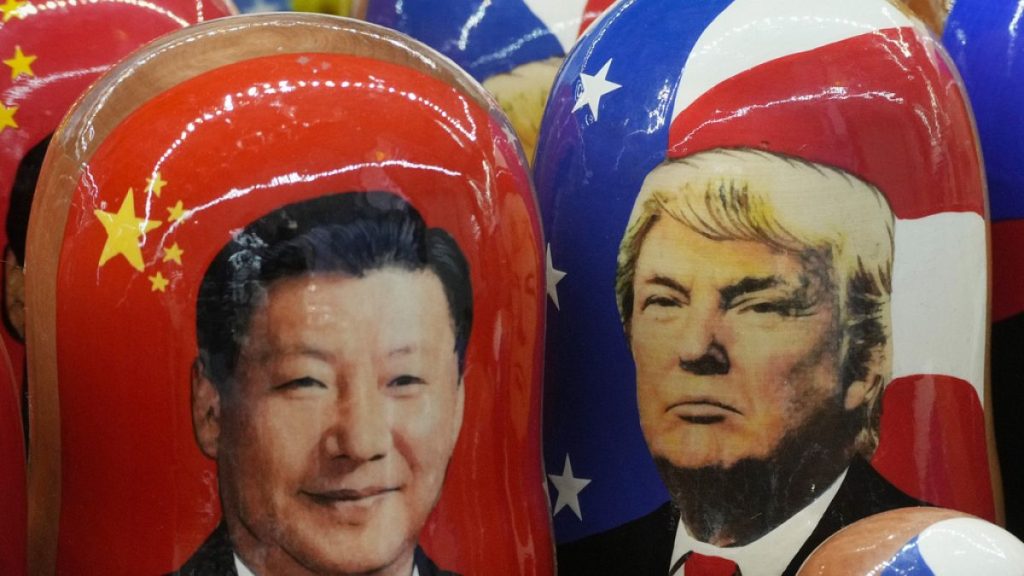The escalating trade tensions between the United States and China reached a new boiling point on Tuesday, February 10th, as China announced retaliatory tariffs on a range of US products, coinciding with the implementation of President Trump’s 10% tariffs on Chinese goods. This tit-for-tat exchange marked a significant escalation in the ongoing trade dispute, further jeopardizing the delicate balance of global trade relations. China’s Ministry of Commerce (MOFCOM) justified its actions by accusing the US of violating World Trade Organization rules and undermining bilateral economic cooperation. The targeted US products included crucial energy resources like coal and liquefied natural gas (LNG), subject to a 15% tariff, while crude oil, farm equipment, and large-displacement cars faced a 10% tariff. This strategic selection of goods aimed to inflict economic pain on US producers while also signaling China’s resolve to defend its interests.
The timing of China’s announcement was highly symbolic, occurring on the very day President Trump’s tariffs on Chinese goods came into effect. This move underscored the growing rift between the two economic giants and the increasing difficulty in finding common ground. While President Trump expressed his intention to engage in discussions with Chinese President Xi Jinping, the implementation of tariffs by both sides created a tense atmosphere, casting doubt on the potential for a swift resolution. The escalating trade war raised concerns about the potential for further retaliatory measures, potentially spiraling into a full-blown trade conflict with far-reaching global consequences.
Adding another layer of complexity to the US-China relationship, the State Administration for Market Regulation in China launched an antitrust investigation into Google, accusing the tech giant of violating antitrust laws. This move appeared to be a strategic maneuver by China, signaling its willingness to utilize various tools to pressure the US amidst the escalating trade dispute. The investigation into Google, a prominent US company, could potentially lead to significant fines or restrictions on its operations in China, further straining bilateral relations.
The backdrop to these developments was President Trump’s recently announced tariffs on Mexico and Canada, which he subsequently agreed to pause for 30 days. This temporary reprieve came after both countries committed to enhancing border security and combating drug trafficking. However, the contrasting treatment of Mexico and Canada compared to China highlighted the complexity of the US trade strategy and the specific challenges posed by the US-China trade relationship. While the US sought to address concerns related to border security and drug trafficking with its North American neighbors, the issues with China were more deeply entrenched, centering on intellectual property theft, forced technology transfer, and trade imbalances.
China’s retaliatory tariffs followed its earlier warnings of taking “necessary countermeasures” in response to President Trump’s decision to impose tariffs on Chinese goods. This earlier statement had signaled China’s unwavering determination to protect its interests and respond proportionally to any perceived trade aggression from the US. The imposition of tariffs on US products was therefore a predictable, albeit unwelcome, development in the escalating trade dispute. The specific goods targeted by China reflected a calculated approach, aiming to exert pressure on key US sectors while minimizing the potential for domestic economic disruption.
The escalating trade war between the US and China carries significant implications for the global economy. The interconnectedness of global trade means that disruptions in the trade relationship between the world’s two largest economies can have ripple effects across various sectors and regions. The uncertainty surrounding the future trajectory of the trade dispute creates a volatile environment for businesses, investors, and consumers, potentially dampening economic growth and contributing to market instability. The implementation of tariffs by both sides represents a significant challenge to the rules-based international trading system, raising concerns about the potential for further escalation and the erosion of multilateral cooperation. The need for a negotiated settlement becomes increasingly urgent as the trade war threatens to further destabilize the global economy and undermine international cooperation.














